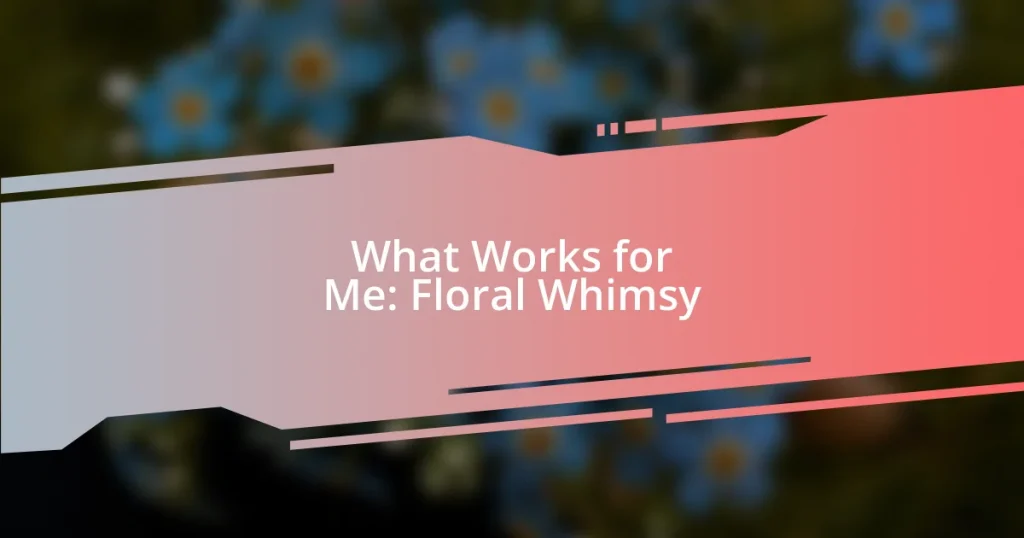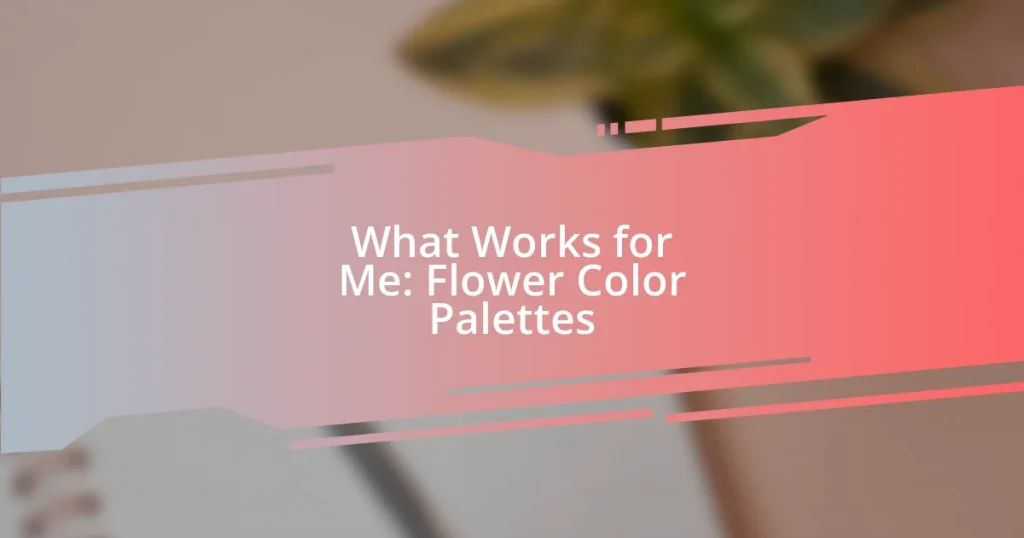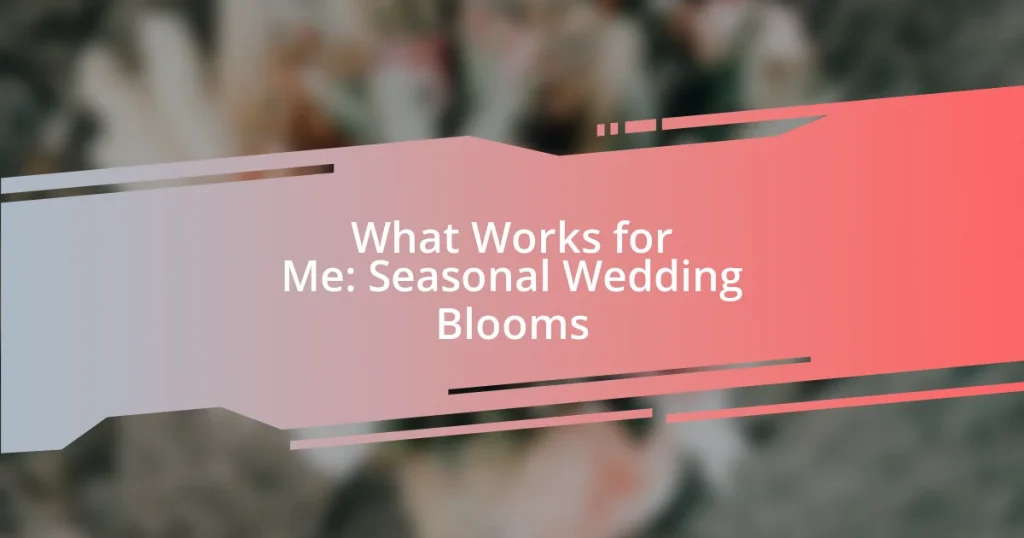Key takeaways:
- Color theory is foundational for understanding color interactions, emotional impacts, and creating harmonious designs through the color wheel, which includes primary, secondary, warm, and cool colors.
- The importance of color in design encompasses emotional impact, brand identity, visual hierarchy, cultural significance, and aesthetic harmony, demonstrating how these aspects influence perceptions and experiences.
- Effective color arrangements can be achieved through techniques like contrast, layering, and context-awareness, while common mistakes involve overwhelming color choices, neglecting lighting, and sticking to safe palettes.
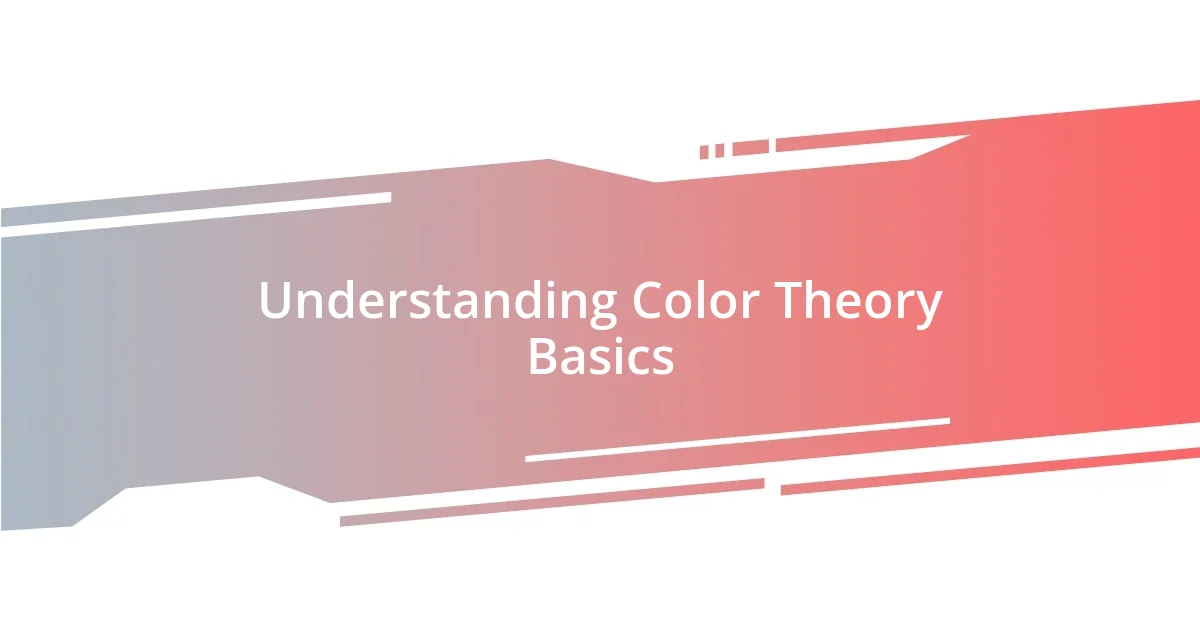
Understanding Color Theory Basics
Color theory is the foundation of how we perceive and use colors, and it’s fascinating to reflect on my first encounter with it. I remember experimenting with paint as a child, mixing red and blue and being thrilled to see purple emerge. This simple act sparked my curiosity about how colors interact and create moods in different settings.
At its core, color theory revolves around the color wheel, which organizes colors into a circular layout based on their relationships. Primary colors—red, blue, and yellow—combine to create secondary colors like green, orange, and purple. Have you ever noticed how a well-balanced color palette can change your mood? It’s like walking into a room painted in soft pastels versus vibrant hues; each evokes a different emotional response.
Another interesting aspect is the concept of warm and cool colors. Warm colors, like reds and oranges, can energize a space, whereas cool colors, such as blues and greens, tend to calm. I often think about how these choices can transform a cozy living room into a serene sanctuary just by selecting the right shades. It’s a powerful reminder of the emotional depth that color can bring to our lives.
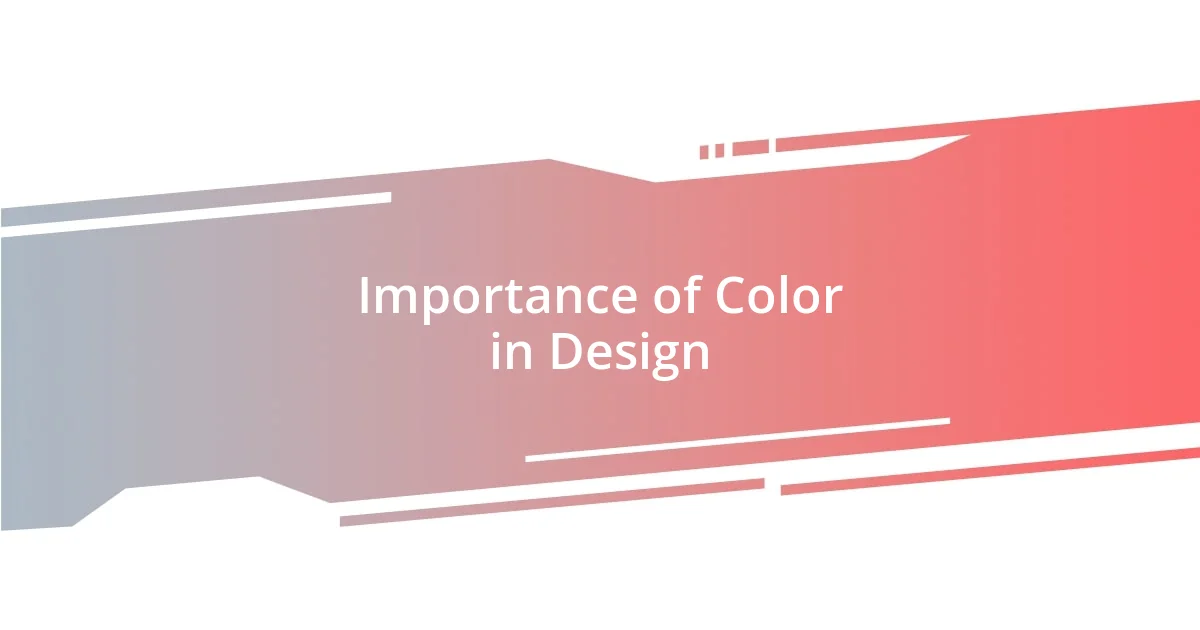
Importance of Color in Design
In my design journey, I’ve come to realize that color is more than just an aesthetic choice—it shapes our perceptions and emotions in profound ways. For instance, I once redecorated my workspace, swapping out stark whites for soft blues and greens. The shift was dramatic; I felt calmer and more focused, a testament to how colors influence our productivity and mood.
Here are some key aspects of why color is crucial in design:
- Emotional Impact: Colors evoke specific feelings, from joy to sadness, influencing how we perceive a space or object.
- Brand Identity: In branding, strategic color choices can communicate company values and attract target audiences effectively.
- Visual Hierarchy: Utilizing contrasting colors can guide the viewer’s attention and create focal points in various designs, making information easier to digest.
- Cultural Significance: Different cultures associate colors with varied meanings; understanding these nuances can enhance the effectiveness of design across diverse contexts.
- Aesthetic Harmony: A well-structured color palette creates a cohesive visual experience, enhancing overall appeal and engagement.
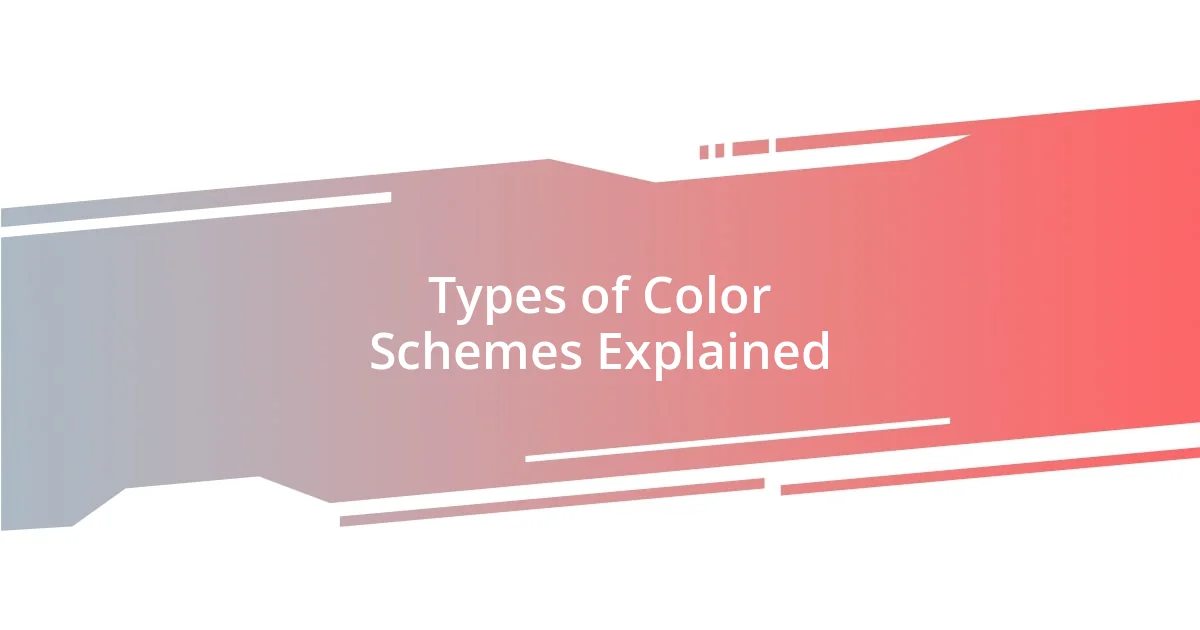
Types of Color Schemes Explained
Understanding the different types of color schemes is essential for anyone looking to create harmonious arrangements. I remember the first time I experimented with complementary colors in a floral arrangement; the contrast between the vibrant purple and sunny yellow made the whole display pop. Complementary schemes, which pair colors opposite each other on the color wheel, can create exciting and dynamic effects, easily drawing the viewer’s eye.
In addition to complementary, there are monochromatic schemes, where variations of a single hue are used to create depth and cohesion. I once designed a room using shades of blue, from soft teal to deep navy, which made the space feel serene yet sophisticated. These subtle differences in tone can evoke a soothing atmosphere, perfect for spaces meant to relax.
Finally, the triadic scheme, consisting of three colors evenly spaced on the color wheel, often offers a vibrant balance. I find that while this scheme can be quite energetic, it requires careful selection and balance; otherwise, the arrangement can become chaotic. Striking the right combination is key to achieving that beautiful harmony, and it’s always rewarding when you hit the mark.
| Color Scheme Type | Description |
|---|---|
| Complementary | Pairs colors directly opposite on the color wheel, creating vibrant contrast. |
| Monochromatic | Uses varying shades and tints of a single color for a cohesive look. |
| Triadic | Involves three evenly spaced colors on the color wheel for a balanced yet dynamic palette. |
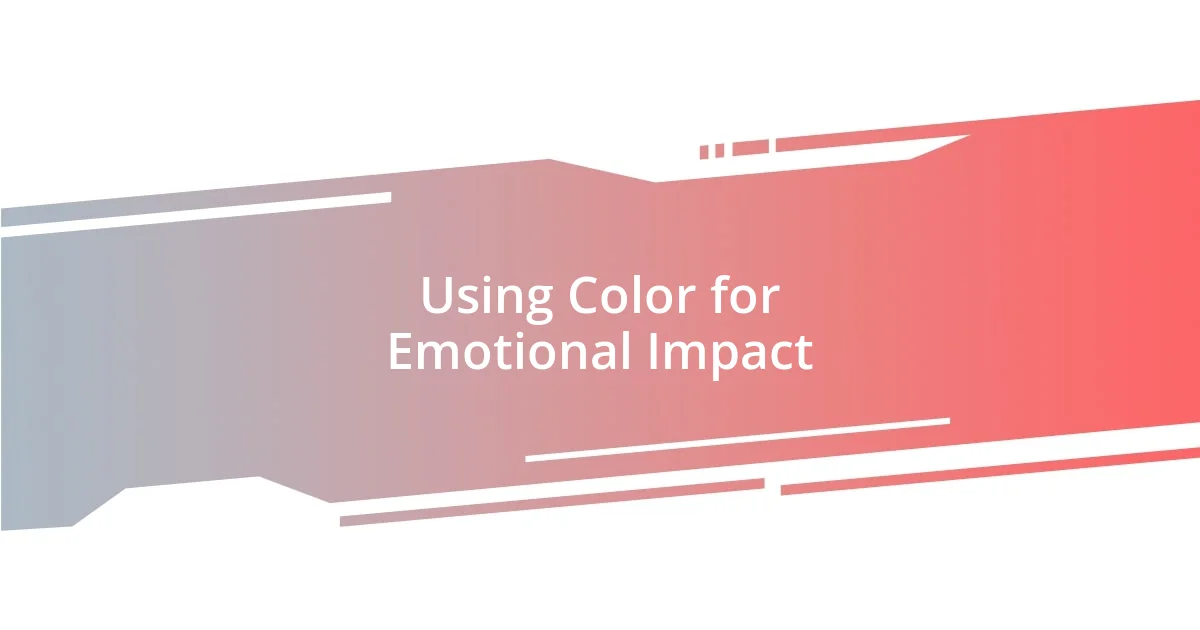
Using Color for Emotional Impact
Using color to evoke emotion is a fascinating journey. I remember a time when I attended a wedding decorated with rich reds and deep browns. The colors lent a warmth to the space that felt inviting, enhancing the joy of the celebration. In contrast, a friend once used stark whites and grays for her event, and while it had a modern feel, it felt colder and less lively. Isn’t it interesting how a simple shift in palette can transform the emotional atmosphere?
When I experimented with yellows and oranges in my kitchen, the change was almost magical. The lively hues brought energy and warmth, making it a place where I wanted to spend more time. I often ponder whether color truly has the power to shape our experiences. In my case, that bright palette did indeed foster a sense of joy and creativity, turning daily routines into something a bit more vibrant.
Let’s not underestimate the psychological effects of color, either. I’ve seen how blue tones in office spaces can promote calmness and focus among my colleagues. On the flip side, adding a splash of red can create urgency and excitement. Reflecting on my experiences, I believe that harnessing colors thoughtfully can lead to spaces that not only please the eye but also resonate deeply with our emotions.

Techniques for Effective Color Arrangements
One of the most effective techniques I’ve found for color arrangements is utilizing contrast. For instance, when I arranged a bouquet that combined deep red roses with crisp white lilies, the stark difference not only highlighted each flower’s beauty but also intensified the overall visual impact. This is particularly powerful in spaces where you want to draw attention to specific elements. Have you ever noticed how a well-placed splash of a bold color can just transform a mundane setting?
Layering colors adds depth, too. I once created a table setting using varying shades of green and gold. The greens ranged from soft mint to rich emerald, while the golden accents connected everything beautifully. This layering created an inviting ambiance that felt rich and complex, making it a gathering spot for family and friends. It’s fascinating to consider how blending different tones can help build a narrative in your arrangements.
Additionally, thinking about the surrounding environment is crucial when planning color arrangements. I vividly recall choosing the paint color for my living room; after a month of tests, I finally settled on a soft sage green that complemented my furniture and let natural light dance across the walls. The harmony between the room’s hues and the outside greenery invigorated the space. Are there colors you’ve chosen that somehow changed the feel of a room? Emphasizing the context around your colors often leads to more cohesive and impactful arrangements.
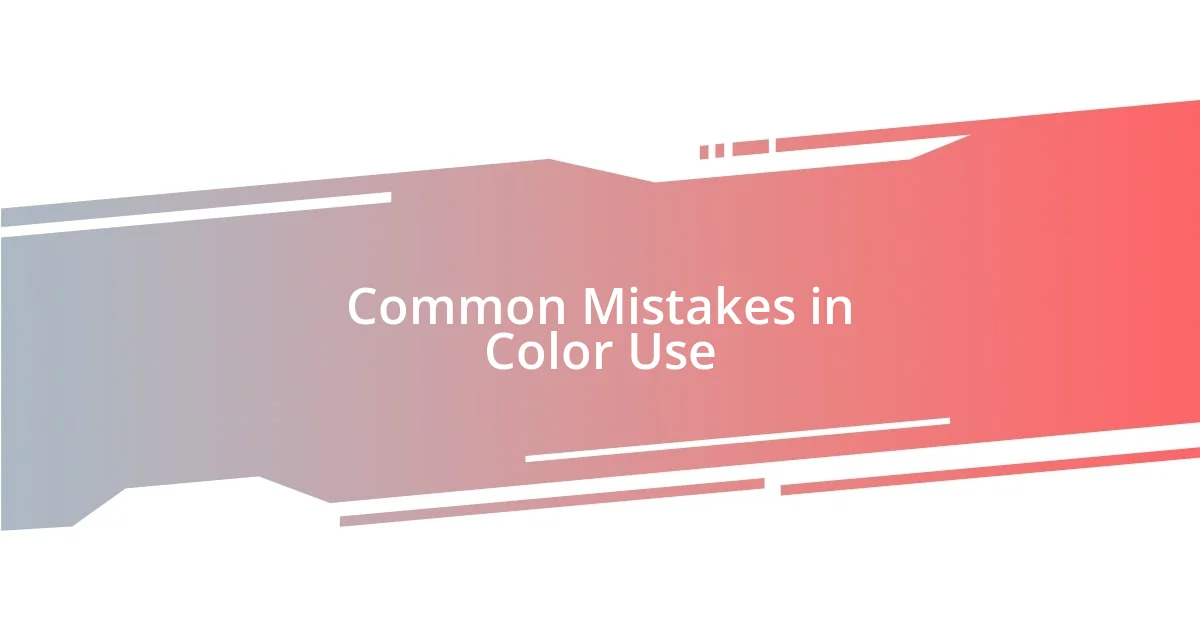
Common Mistakes in Color Use
Color selection can be a tricky terrain, and I’ve certainly stumbled along the way. For example, I once decorated my home office in a vibrant orange. While I intended to create an energizing environment, the space ultimately felt overwhelming. It’s easy to get carried away with bold colors, but the key is to balance them with neutrals to prevent sensory overload. Have you ever found yourself in a space that felt too much, even if the colors were your favorites?
Another common mistake is neglecting lighting when choosing colors. I remember selecting a beautiful navy for a bedroom, excited about the calm it would bring. However, during the day, the room felt dark and uninviting due to the lack of natural light. I realized that the same color could evoke different feelings depending on the light situation. How often do we consider how a color might change with the sun’s position?
Lastly, I’ve noticed that many people stick to overly safe color palettes, which can make arrangements feel flat and uninspired. I experimented with adding unexpected hues, like a pop of teal to a predominantly beige setup. The result was refreshing and unexpectedly delightful! Are we sometimes too afraid to step out of our comfort zones? Embracing a little daringness in color choices can truly enliven any arrangement.
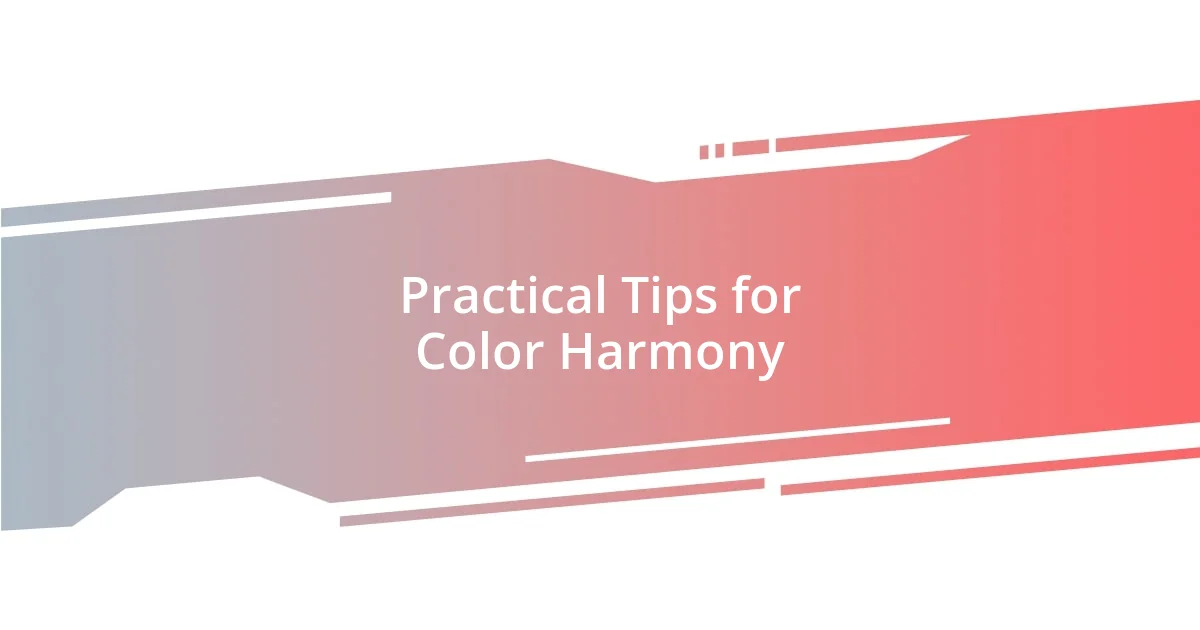
Practical Tips for Color Harmony
When I think about achieving color harmony, one practical tip is to embrace the concept of complementary colors. I recall a time when I paired a cheerful yellow with a soft purple; the vibrancy of the yellow really danced against the calming effect of the purple. It was like they were having their own spirited conversation! How do certain color pairings make you feel? Sometimes, it’s these juxtapositions that can evoke the strongest emotions.
Another approach I’ve found helpful is limiting the number of colors in a single arrangement. For an outdoor dinner party, I opted for a simple palette of three colors: navy blue, crisp white, and rich gold. This decision not only simplified the overall aesthetic but also allowed for effortless coordination. Did you know that focusing on a few colors can create a more cohesive and sophisticated look? It’s remarkable how restraint can often lead to elegance.
Lastly, don’t forget about the importance of texture and finish when considering color harmony. I once decorated a space with velvet cushions in deep burgundy alongside sleek satin drapes in a matching hue. The tactile differences added depth, making the colors even more visually captivating. Have you ever noticed how a particular texture can bring a color to life? Blending different materials can enhance the overall experience, making it all the more inviting for anyone entering the space.













